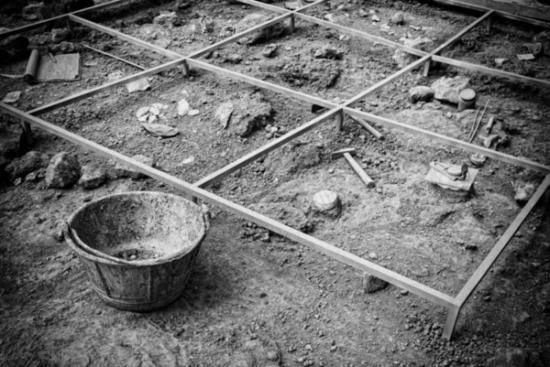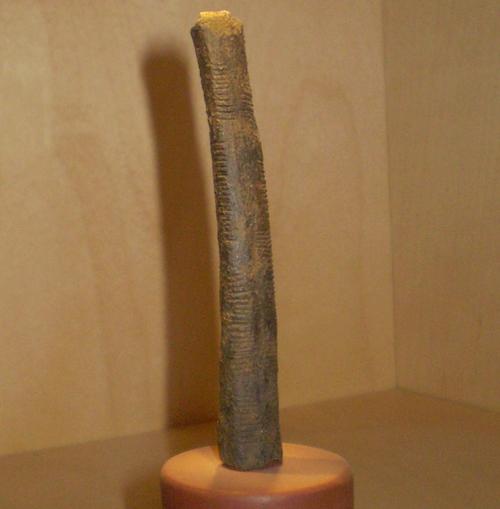Ross Pomeroy
Source http://www.realclearscience.com/blog/2015/11/the_earliest_evidence_of_logical_reasoning.html?
 When did human ancestors first learn to count? Well now that is a tricky question to answer. Rudimentary counting likely began with our fingers and may have advanced to dividing out pebbles into ordered groups. But there's no way to really know this. Archaeologists would be hard-pressed to find an ancient human fossilized in the act of counting his or her digits, and they'd be equally unlikely to find pebbles neatly piled into ordered groups, untouched and unaltered for tens of thousands of years.
When did human ancestors first learn to count? Well now that is a tricky question to answer. Rudimentary counting likely began with our fingers and may have advanced to dividing out pebbles into ordered groups. But there's no way to really know this. Archaeologists would be hard-pressed to find an ancient human fossilized in the act of counting his or her digits, and they'd be equally unlikely to find pebbles neatly piled into ordered groups, untouched and unaltered for tens of thousands of years.
There is, however, an artifact that hints at prehistoric mankind's counting skills. A 43,000-year-old baboon fibula recovered in the Lebombo Mountains between South Africa and Swaziland, has, on one side, 29 carved markings arranged in a row. Scientists surmise that, at one point, one of our ancestors took tally of something, notching the count into the bone, but it's really anyone's guess as to what the individual or individuals were keeping record of. Artifacts like this one, called tally sticks, are relatively common in the fossil record and have been unearthed in Europe and Africa.
One of these tally sticks, in particular, stands out from the rest. In 1960, while exploring the Semliki Valley in what is today the Democratic Republic of the Congo, Belgian geologist Jean de Heinzelin de Braucourt discovered a strange bone amongst the remains of an ancient settlement buried in a volcanic eruption. The Ishango bone, as it is now called, was thinned down, polished, and engraved, with a piece of quartz protruding from the top. What really set the artifact apart, however, were the defined markings along its three sides. There were 168 notches in all, arranged into sixteen groups and three rows. Were these more than mere tallies? Did they constitute an understanding of mathematics? If so, that certainly would be amazing, especially considering that the Ishango bone is roughly 20,000 years old!
 The bottom row is arranged into four groups of 11, 13, 17, and 19 notches, collectively totaling 60. Fascinatingly, all of these numbers are prime numbers between ten and twenty.
The bottom row is arranged into four groups of 11, 13, 17, and 19 notches, collectively totaling 60. Fascinatingly, all of these numbers are prime numbers between ten and twenty.
 The middle row is composed of eight groups of notches. The first six give a number followed by its double: 3 and 6, 4 and 8, 5 and 10. The last two numbers are 5 and 7, which don't follow the pattern. The row sums to 48.
The middle row is composed of eight groups of notches. The first six give a number followed by its double: 3 and 6, 4 and 8, 5 and 10. The last two numbers are 5 and 7, which don't follow the pattern. The row sums to 48.
 The final row is arranged into four groups of 11, 21, 19, and 9 notches. Heinzelin suggested that they all were related to the number ten (11 - 1 = 10, 21 - 1 = 20, 19 = 20 - 1, 9 = 10 - 1). Like the first row, all of the notches total to 60.
The final row is arranged into four groups of 11, 21, 19, and 9 notches. Heinzelin suggested that they all were related to the number ten (11 - 1 = 10, 21 - 1 = 20, 19 = 20 - 1, 9 = 10 - 1). Like the first row, all of the notches total to 60.
 Many have agonized over the significance of the notches and numbers. Do the notches constitute an attempt at a rudimentary numeral system? Is the bone, perhaps, a basic calendar,potentially used to track the lunar phase in relation to the female menstrual cycle?
Many have agonized over the significance of the notches and numbers. Do the notches constitute an attempt at a rudimentary numeral system? Is the bone, perhaps, a basic calendar,potentially used to track the lunar phase in relation to the female menstrual cycle?
Mathematician Vladimir Pletser of the European Space Research and Technology Centre is particularly enamored with uncovering the artifact's secrets.
"The...Ishango bone has notches that seem to form patterns," he writes, "making it the first tool upon which some logic reasoning seems to have been done." Pletser suggests the bone may evince that ancient humans in the region used a base twelve numbering system.
"The Ishango bone is certainly the best early example of precounting," Amir Aczel, a historian of mathematics, writes in his latest book Finding Zero.
Of course, out of this wide search for meaning, the notches may in fact be meaningless, simply scratched in to create a better gripping surface.
Regardless, the Ishango bone regularly draws crowds at the Royal Belgian Institute of Natural Sciences in Brussels, where it is on permanent display.
(Images: Shutterstock, Ben2, Albert1ls)